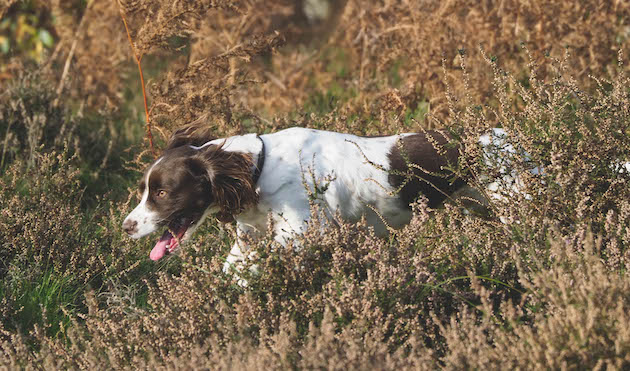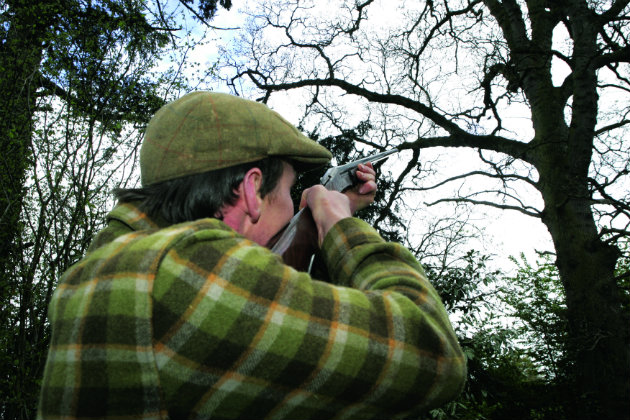What you need to know about ticks and Lyme disease
Common parasites are a risk to humans and dogs, says David Tomlinson

Always check dogs for ticks if they have been hunting in tick-infested countryside
Lyme disease in dogs and humans
Lyme disease is an illness caused by bacteria that live in the guts of infected ticks, so those of us who take our dogs to areas where we are likely to encounter these parasites are particularly vulnerable. Lyme disease in dogs is also a concern too. So it’s essential to be not only aware of the threat posed by tick bites, but to know what to do if you think that you or your dog might have the disease. (Read more about Lyme disease in dogs.)
First, the history. Lyme disease takes its name from the town of Lyme in Connecticut, US, where it was first discovered in the 1970s. A number of people in the town had been suffering from puzzling and debilitating health issues. Their symptoms were varied, but ranged from swollen knees to paralysis, while headaches and severe chronic fatigue were common. (Read 15 vital things you need to know about Lyme disease.)
The medical profession was mystified and though the illness was called Lyme disease, it wasn’t until the early 1980s that a scientist called Dr Willy Burgdorfer discovered the link between tick bites and the disease. His discovery is marked by the bacteria that causes the disease being called Borrelia burgdorferi.
We now know that Lyme disease isn’t new but has been circulating in the forests of North America for at least 60,000 years, carried by deer ticks. Research suggests that it might well have been around in Europe and Asia for equally long, so Lyme, an attractive small rural town named after Dorset’s Lyme Regis, has the misfortune to be associated with one of the world’s nastiest diseases.
Blood meal
To understand the threat posed by ticks, it’s important to have some knowledge of tick biology. Here in the UK, there are two dangerous species: Ixodes ricinus — also known as the sheep or deer tick — and Ixodes hexagonus, the hedgehog tick. They are both eight-legged arthropods with a similar life cycle. They start as eggs, usually laid in the spring, eventually hatching into tiny six-legged larvae. Once they have hatched, they need a blood meal to survive — a mouse may well provide their first feed.
After feeding, the larvae will remain dormant during the winter before moulting and growing an additional pair of legs. Though now somewhat bigger, they are still less than 2mm long. These young nymphs search immediately for their next meal. Once they have found a suitable host and have gorged on its blood, they drop off, then moulting into their third and final adult stage.
The tick once again seeks a host to provide it with blood. It can neither jump nor fly, so it climbs up into long grass or similar vegetation where it waits until an animal brushes past that it can attach itself to. Once its jaws are sunk into a suitable host, it gorges itself with blood, swelling quickly and eventually dropping off after four to five days. Mating then follows, the female lays her eggs and the cycle starts over again.
Ticks can spread disease in all three stages of their life, but it is the second and third stages that we and our dogs are most likely to encounter them. However, it’s the second nymph stage that is thought to be the most dangerous, because the tick is so small it is easily overlooked.
Certain areas seem to have a much higher proportion of Lyme-carrying ticks than others. Hotspots in the UK range from the New Forest and Exmoor to the Scottish Highlands, but it’s safest to assume all ticks are infected.
Prevention is better than cure, so to avoid tick bites, keep your skin covered when walking in areas where you are likely to encounter them. If you have been in a danger zone, check yourself carefully for the parasites as soon as you can. If you find one, remove it with a special tick extractor to avoid leaving the mouthparts in your skin. To avoid Lyme disease in dogs check them over in the same way and remove any ticks you find with similar care.
Medical help
If you have been unlucky enough to be bitten by an infected tick, the first sign is often a blotch around the bite. Seek medical help immediately, as early treatment with antibiotics is generally effective.
With Lyme disease in dogs, symptoms are fever, loss of appetite or swelling of joints: seek veterinary help as soon as you can. Unfortunately, many of the anti-tick treatments for dogs that we are offered are expensive, extremely toxic and have serious side effects and environmental implications. I tried a homeopathic treatment last year, which didn’t work; if you have found an effective solution, please email me and I will report back.








